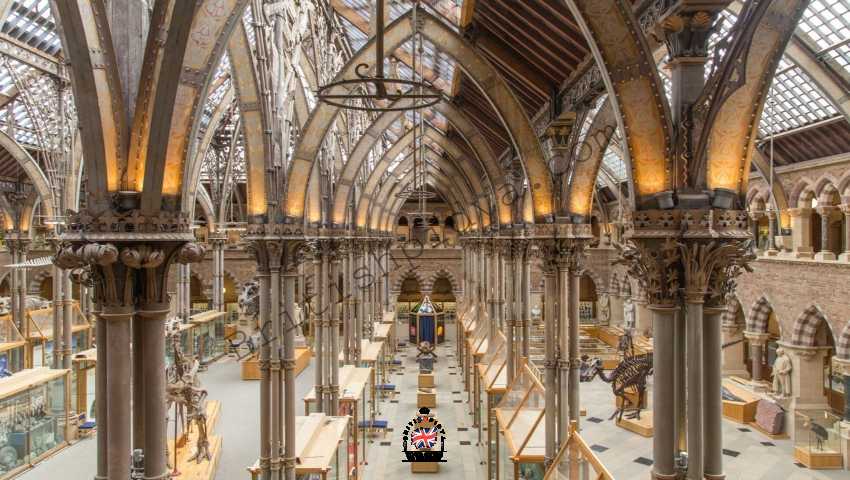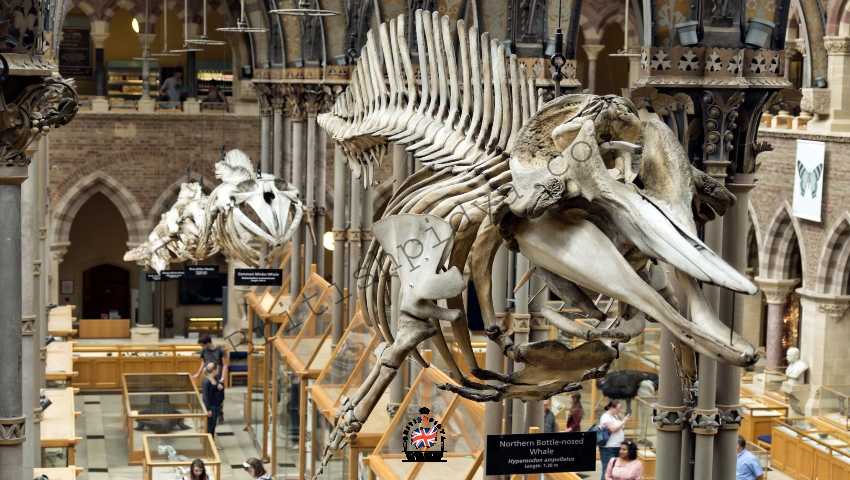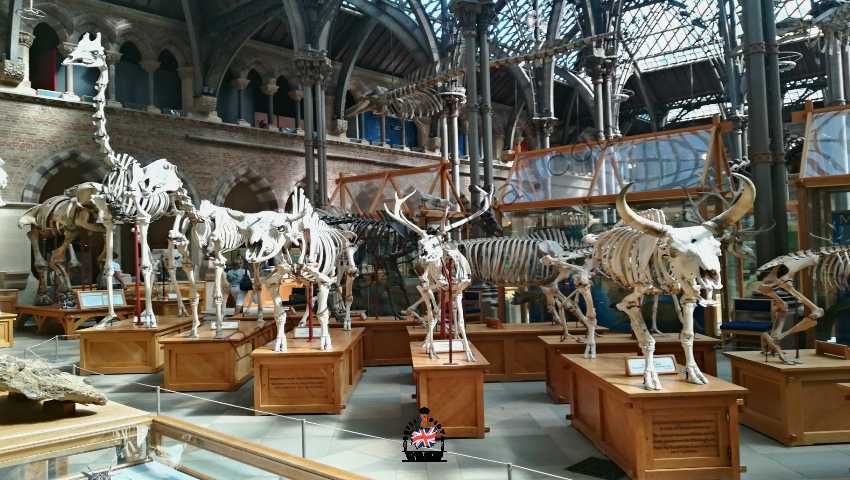Oxford Natural History Museum … Ihr vollständiger Reiseführer 2023
Das Oxford Natural History Museum ist eines der Oxford-Museen mit einzigartigen Ausstellungen, die viele Teile der natürlichen Welt darstellen. Daher wäre es ein Fehler zu glauben, dass der Spaß bei einem Besuch in Oxford begrenzt ist. Die Stadt empfängt ihre Gäste mit einem unvergesslichen Ambiente, das alle Touristenattraktionen durchdringt und jeden zu einem längeren Aufenthalt verleitet.
Wenn Sie mehr über das Ziel des Museums und darüber erfahren möchten, wie es sein Hauptziel erreichen will – die Aufklärung der Öffentlichkeit über die natürliche Welt und die Geschichte des Lebens auf der Erde seit seiner Entstehung in all seinen Formen – dann lesen Sie alle Absätze in Dieser Artikel.

Naturhistorisches Museum der Universität Oxford: Wo sich Geschichte und Wissenschaft überschneiden
Das Eintauchen in die Essenz des Oxford University Museum of Natural History ist wie ein Abenteuer in den Kern der Geschichte unserer Welt und der Wissenschaft, die sie prägt. Das Museum verfügt über eine umfangreiche Auswahl an geologischen, zoologischen und botanischen Exemplaren, von denen jedes seine einzigartige Geschichte von Evolution, Anpassung und Überleben erzählt.
Dodo to Dinosaurs: Eine Reise durch die Zeit
Das Museum beherbergt die einzigen Weichgewebereste des Dodo – ein Symbol des Aussterbens – und ermöglicht es uns, die ergreifenden Lehren zu erforschen, die uns das Aussterben über unsere Rolle beim Umweltschutz lehrt. Die Dinosauriersammlungen hingegen zeichnen lebendige Bilder einer längst vergangenen Ära, mit hoch aufragenden Skeletten, die Ehrfurcht und Neugier wecken.
Mineralogische Wunder: Die verborgenen Schätze der Erde
Die Mineralogiesammlungen dienen als Schatzkammer der Geheimnisse der Erde. Von schimmernden Edelsteinen bis hin zu antiken Meteoriten sind diese Exemplare ein Beweis für die dynamische und sich ständig weiterentwickelnde Geologie des Planeten und machen die Wunder der Geowissenschaften für Sie greifbar.

Architektur und Kunst: Die majestätische Struktur des Museums
Das architektonische Können des Museums zeigt sich in seinem reichen neugotischen Stil mit aufwendigen Steinschnitzereien, einem Glasdach und hohen Bögen. Die Erhabenheit der Struktur steigert das Museumserlebnis und macht jeden Besuch zu einem sinnlichen Vergnügen.
Das große Glasdach: Ein himmelwärts gerichteter Baldachin
Das architektonische Kronjuwel des Museums ist sein Glasdach. Bestehend aus mehr als 8.500 einzelnen Glasscheiben, durchflutet es die Galerie mit natürlichem Licht und schafft einen hellen und einladenden Raum, der die vielfältigen Exponate des Museums beherbergt.
Steinschnitzereien und Gusseisensäulen: Herstellung des Gerüsts
Das Glasdach wird durch 126 Steinsäulen ergänzt, die jeweils mit detaillierten Schnitzereien verschiedener Pflanzenarten verziert sind. Diese Säulen bilden eine harmonische Verbindung von Wissenschaft und Kunst und verleihen dem Museum einen einzigartigen Charme und Authentizität.

Bildung und Forschung: Der Hauptzweck des Museums
Seit seiner Gründung war das Oxford University Museum of Natural History ein Zentrum der wissenschaftlichen Ausbildung und Forschung. Das Museum fördert weiterhin eine Kultur des Forschens und Entdeckens und lädt Menschen jeden Alters ein, an der Freude am Entdecken teilzuhaben.










